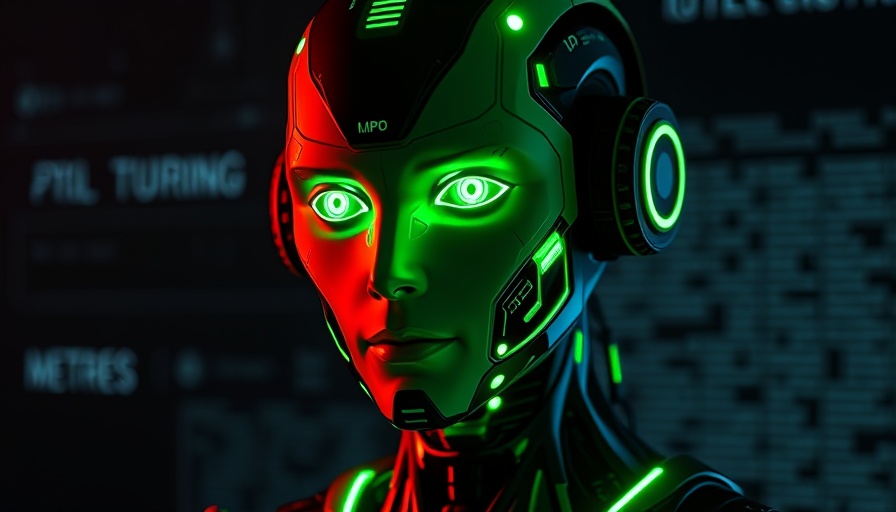
Unveiling Mercury: A New Era for AI Coding Assistants
In the world of artificial intelligence, breakthroughs happen at lightning speed, yet few are as revolutionary as the newly launched AI model, Mercury. This innovative tool, developed by Inception Labs, is designed to challenge traditional AI by not just matching but exceeding the performance limitations of existing coding assistants. It leverages a unique method called diffusion, enabling it to generate tokens in bulk rather than one at a time. This significant shift can redefine how businesses integrate AI into their operations, especially in sectors where coding efficiency is crucial.
In 'New FREE AI 'MERCURY' Just Humiliated Every Top Model With Insane Speed,' the discussion dives into the cutting edge of AI technology, exploring key insights on how Mercury is changing the AI landscape, compelling us to analyze its implications further.
What Makes Mercury Stand Out?
Current AI models, including widely-used tools like ChatGPT, function by predicting one token after another, hindered by speed constraints. Mercury flips the script by generating many tokens simultaneously, thus drastically improving its processing speed. This model has demonstrated an astonishing capability of producing up to 1,100 tokens per second under optimal conditions, significantly surpassing competitors like GPT-4 and Gemini 2.0. For business owners, this means that tasks previously deemed time-intensive could now be executed in fractions of the time.
Analyzing Performance: Speed vs. Quality
While speed is impressive, Mercury does not compromise on quality. Comparative tests have shown that its accuracy at tasks can rival that of existing top contenders. For instance, the Mercury Coder Mini reaches an evaluation score of 88%, demonstrating that it can not only produce results quickly, but it can do so with a high degree of reliability. For companies looking to implement AI-driven solutions for coding tasks, these performance metrics may prove essential in delivering faster project timelines without sacrificing quality.
A Smart Approach to AI Development
The efficiency of Mercury stems from its innovative approach to token generation. Instead of constructing answers left to right, it resembles editing in a Google Doc, where users can revise any part of the text at any time. This instantaneous fine-tuning process aligns perfectly with coding practices, where modifications often necessitate changes in other parts of the code base. As a result, businesses can envision a world where AI-assisted programming becomes a seamless integration into their workflow.
The Carbon Footprint: An Eco-friendly Revolution
Understanding the implications of AI also involves considering its environmental impact. Mercury's ability to process more tokens per GPU unit means it can effectively lower the computational resources used, making it a greener solution. As organizations seek sustainable growth, adopting this advanced AI technology just might satiate both productivity demands and environmental responsibilities.
What's Next For Mercury?
The release of Mercury signals not just a competitive edge but potentially a whole new direction for AI tools. With early testers praising its speed and potential applications in various programming languages, its future looks bright. Furthermore, the potential to expand functionalities into multimodal formats could enhance its utility in diverse areas, from creating educational tools to business analytics.
Businesses should be prepared to explore these innovations further as Mercury redefines the landscape of AI technology. Whether through improving coding efficiency or developing new software solutions, the speed and quality Mercury offers could position companies at the forefront of their industries.
As we step into this new era of AI, it is imperative for business owners to engage with emerging solutions like Mercury. GET YOUR OWN AI ASSISTANT and experience the transformative potential of this breakthrough technology first-hand.
 Add Row
Add Row  Add
Add 




Write A Comment